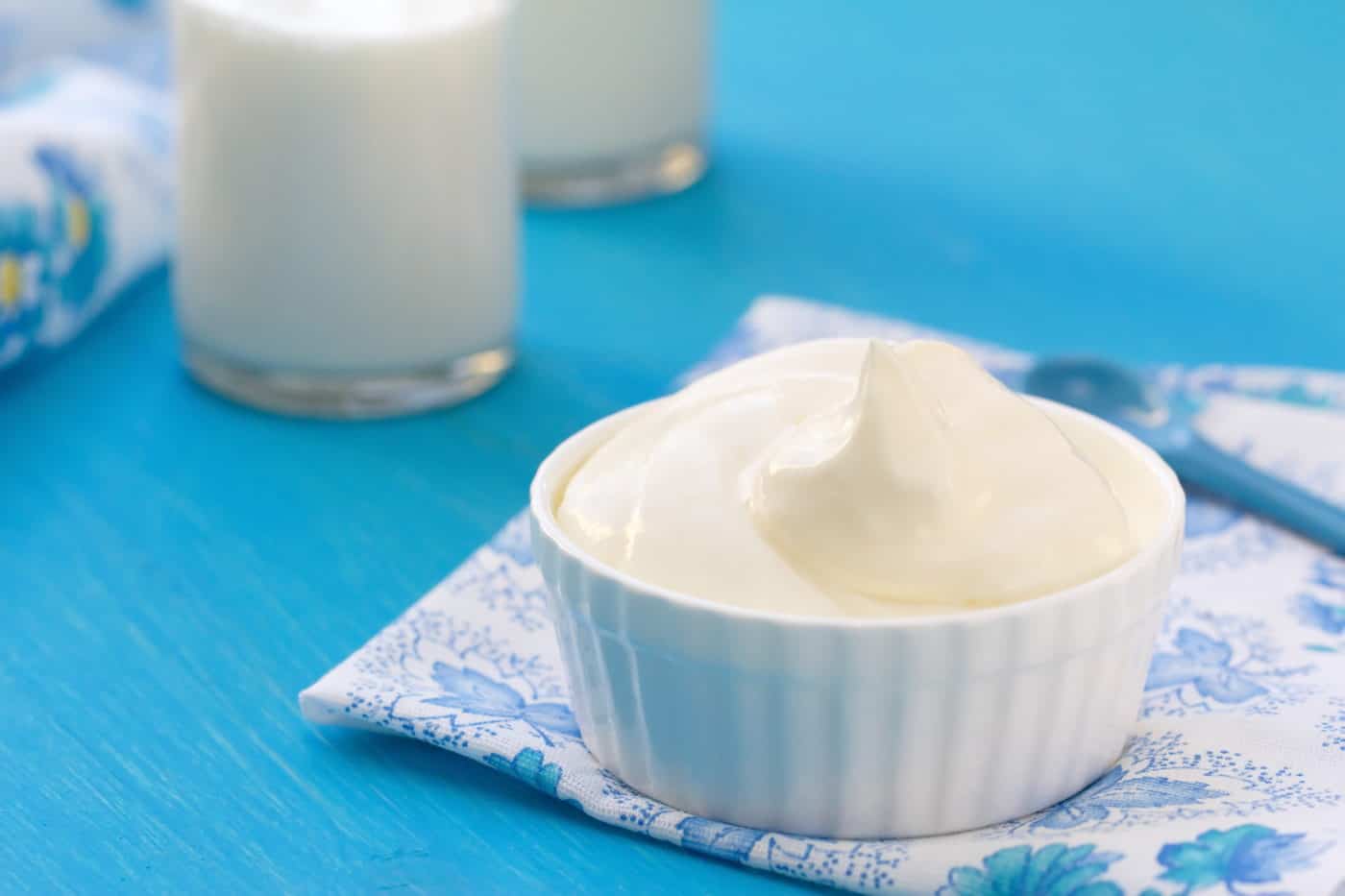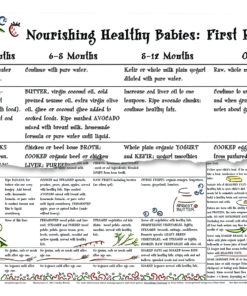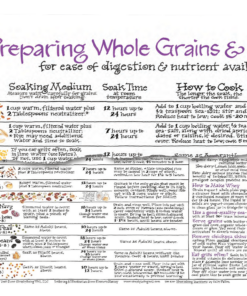You can’t buy real sour cream in the United States—but read on for an easy, homemade option.
Sour cream is not available in the United States. Real sour cream, that is. Authentic sour cream. Sour cream that is soured cream. I know, you just bought a container at your grocery store the other day. The label reads “sour cream.” You use it in recipes and put it on your baked potatoes. Am I crazy?
No, I am not crazy. Call me a detective. Call me a food investigator. I read labels, and I suggest for your health that you do the same. Knowledge is power, they say. And food label knowledge gives you the power to make good food choices. To choose health.
Back to that bucket of sour cream in your refrigerator. It is not sour cream. True sour cream—real sour cream—is raw cream that has been allowed to sour. That is where it got its name. Cream that soured was called “sour cream.” Yet cream that has soured is not available for commercial purchase in this country. Why? Because the vast majority of cream sold in the United States is pasteurized, and pasteurized cream does not sour. It putrefies. Putrefied cream is pathogenic, meaning it has been taken over by pathogenic bacteria, which thrives in the sterile environment caused by pasteurization. And putrefied cream can make you very sick.
So what exactly is the stuff labeled “sour cream”?
The sour cream you buy in stores is actually cultured cream, which is just what it sounds like: cream that has been cultured. Not that there is anything wrong with cultured cream (known as “crème fraiche” in France). In fact, cultured cream is very good for you and your digestive tract, much like yogurt, another dairy product we are all familiar with. And what is yogurt? Simply milk that has been cultured.
The label on the best “sour cream” you can buy will list two ingredients: pasteurized cream and bacterial cultures. But labels on not-so-good sour cream will also list guar gum, xanthan gum, pectin, or some combination of the three. These are all emulsifiers, agents used by the food industry to firm up food products. (See my previous blog post, “The Benefits of Homemade Yogurt,” to learn more about pectin and the questionable quality of the milk food producers use to make yogurt.)
The labels on inferior, commercially produced “sour cream” may also include nonfat dry milk, used to thicken up the product—that is, to emulsify, gel, or “set” it. Nonfat dry milk is yet another food fraction. It is made by spray drying liquid nonfat milk in a low-pressure chamber, where the water evaporates out of the skim milk. This product has no minimum protein requirement and is regulated by the FDA. Yikes!
If you would like real sour cream, make your own. Easy peasy. Simply obtain fresh raw cream from a farmer near you and allow it to sour on the counter for a few days. (Try looking for locally available real cream and milk at RealMilk.com or WestonAPrice.org.) Soured cream is delicious—rich with lipase and beneficial bacteria, and low in lactose. Good for the immune and digestive systems, and easy for your body to digest and use. If you are ready to make your own real sour cream, try the following recipe.
Real Sour Cream
Don’t forget, you must use raw cream only. It bears repeating—do not try this with pasteurized cream. It will putrefy and make you sick. Only raw cream will sour. If you do not have access to real cream, you may use pasteurized cream to make your own homemade cultured cream, or crème fraîche, instead. (See the next recipe.)
Instructions
- Place raw cream in a glass jar and cover. Leave on the counter at room temperature for a minimum of 24 hours. However, 36 hours should guarantee that all of the lactose will be predigested for you.
- After 24–36 hours, place the jar in the refrigerator.
- Consume soured cream liberally! It will be lactose free.
Note: It is a good idea to retain some of your sour cream—about a ¼ cup or so—to use as a starter for crème fraîche.
Crème Fraîche
Making your own crème fraîche using pasteurized cream is very easy to do. It is also delicious and contributes valuable enzymes and bacteria to your digestive tract. However, it is an inferior product because pasteurized cream is your base. Pasteurization denatures proteins—changes their structure—which destroys beneficial enzymes and bacteria. Culturing pasteurized cream will enhance it, but it will never be as good as that made with fresh raw cream in its natural state.
Ingredients
1 pint raw cream or organic heavy cream from grass-fed cows (pasteurized okay, but not UHT)
¼ cup crème fraîche, yogurt (storebought or from a previous batch), or whey
Instructions
- Pour cream into a small saucepot. Gently heat on the stove at low temperature. Use a thermometer (digital is easiest) to bring cream to 110°F. If using pasteurized cream, heat to 180°F first, then cool to 110°F.
- Pour cream into a pint-sized, wide-mouth glass jar.
- Add crème fraiche, yogurt, or whey. Stir together to mix well. Cap the jar and leave on the counter for a minimum of 24 hours.
- Refrigerate and consume liberally!
For more information about the benefits of culturing dairy and easy-to-follow recipes, see my book, Cooking Techniques for the Gut and Psychology Syndrome Diet, Part II: Culturing Dairy, available from Selene River Press.
Photos from iStock/zlikovec (main image), lisaaMC (sour cream)






Such important info! Thank you, Monica!